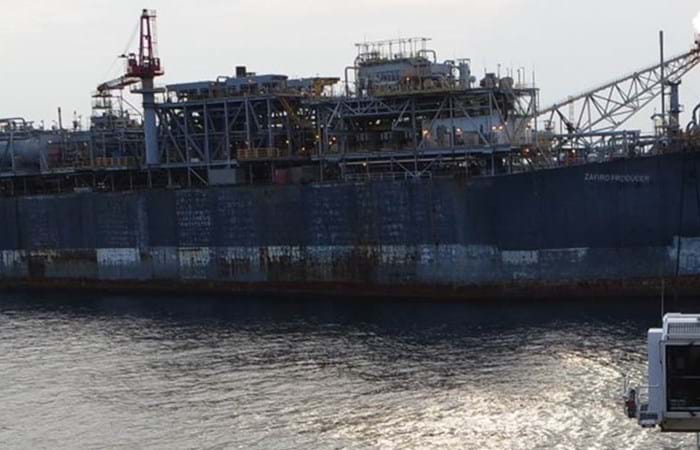Mobil Equatorial Guinea Incorporated, an affiliate of ExxonMobil, entered into a contract with Boskalis for the Zafiro Producer Mooring Replacement Project Phase 2. The Zafiro Producer is installed in 180 m (590 ft)water depth approximately 74 km (40 nauticalmiles) west of Malabo, Equatorial Guinea.
The Zafiro oil field is located in the 500,000-acre Block B, 68 km (42 miles) WNW of Bioko island, Equatorial Guinea, adjacent to the international border with Nigeria. Water depths range from less than 300 ft to greater than 5,000 ft. The Zafiro-1 discovery well was drilled in February 1995, testing at 10,400 barrels per day (b/d). Three subsequent wells showed the reservoir to be relatively shallow (around 5,000 ft), and low pressure, with a bottom-hole shut-in pressure of 2,800 psig. The Zafiro Producer is a converted 268,191 dwt VLCC (very large crude carrier). The tanker was built in 1973, with an overall length of 331.5 m, a breadth of 56 m and a depth of 26.4 m. It has a draught of 20.5 m fully loaded, or 8.3 m ballasted. Early reservoir evaluation indicated that a 40,000 b/d rate could be expected from the planned eight wells, requiring the installation of an 80,000 b/d process plant, a 40 MMSCFD gas flare capacity and storage for 1.7 MMBBL of oil.The FPSO was installed in 1996 and later the storage capacity was taken over by the Serpentina changing the Zafiro Producer into a FPU (Floating Production Unit).
Mooring replacement
This 2015 campaign concluded a partial mooring replacement for ML 1, 2, 4, 8, 9, 10, 11 and 12 as well as a complete mooring replacement for ML 3. The project scope of the Phase 2 mooring replacement consisted of the following:
- Installation of two new anchors utilizing a reaction anchor for tensioning;
- Inspection of specified mooring components;
- Change out of most, if not all, components for a full replacement of two of the mooring lines;
- Change out of specified components for a partial replacement of seven of the mooring lines;
- Removal of samples for forensic analysis.
